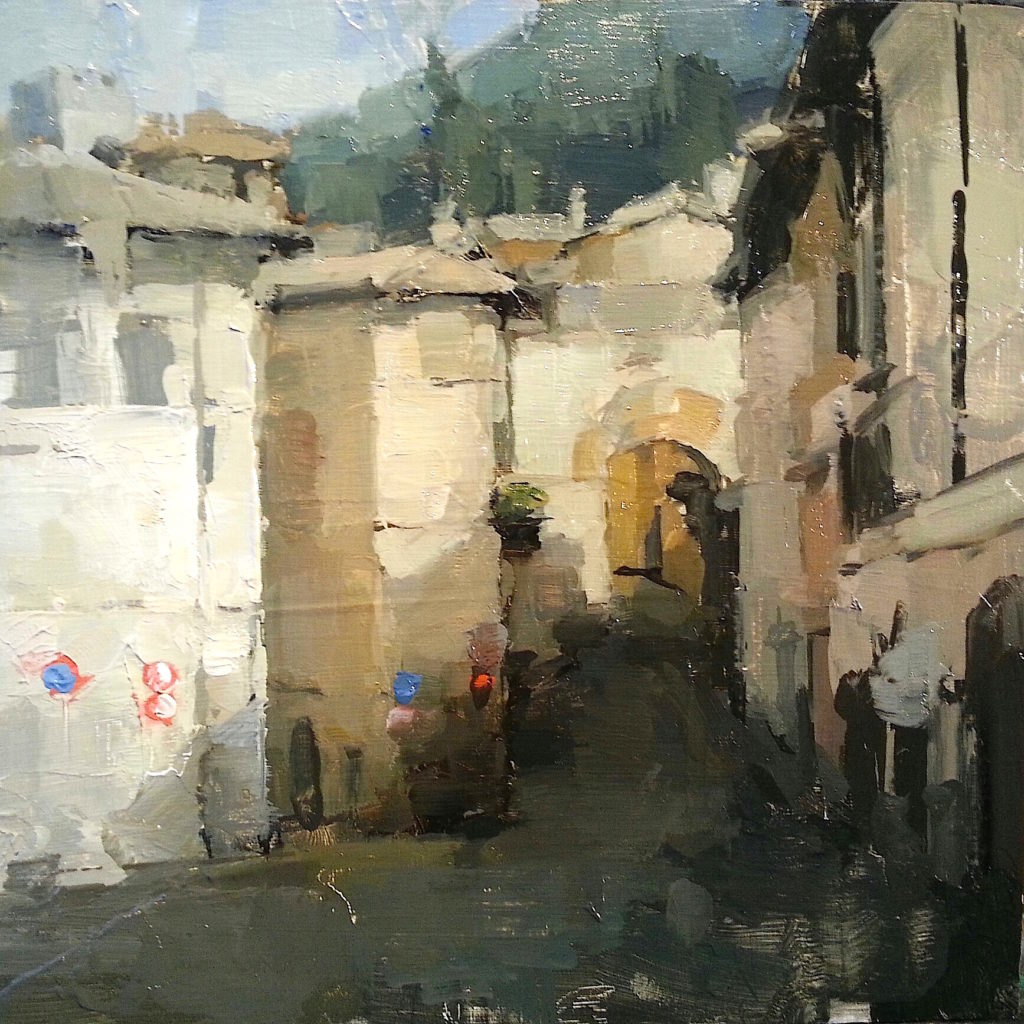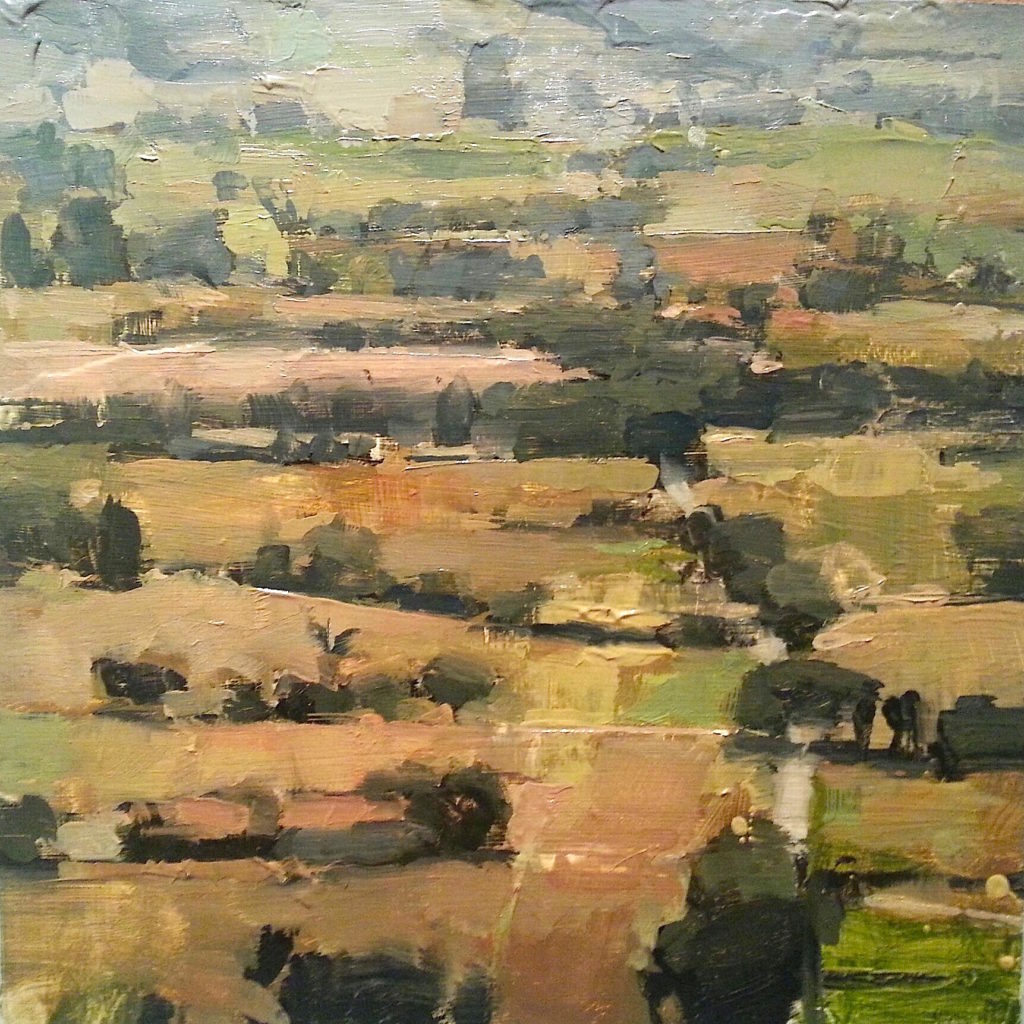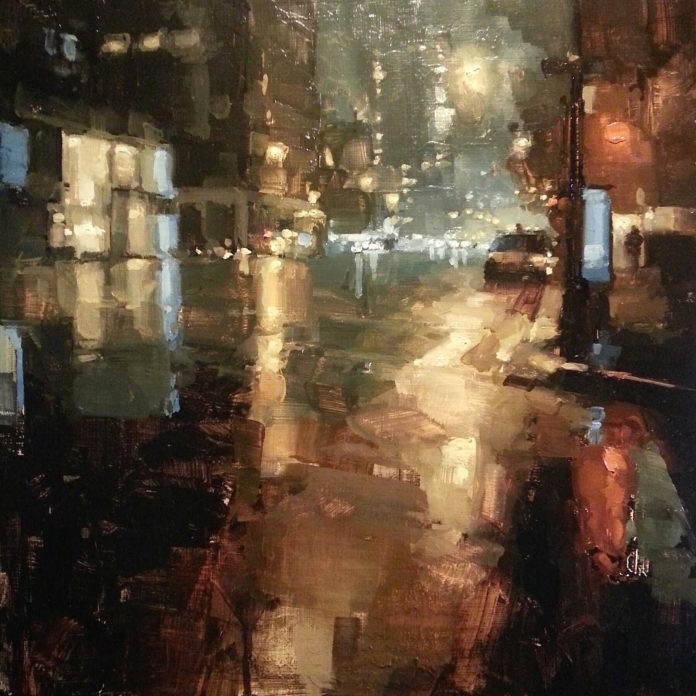Beyond the Canvas > As an artist, one does not need to sacrifice his or her personal expression for the sake of learning the principles.
BY JAMES KRONER
We are all familiar with the universal truths that lay the foundation for representational painting—design, values, edges, drawing, color, and the many concepts that apply. Yet as we learn and employ these concepts, many of us tend to lose our expression, the very thing that gives us voice. We adapt techniques in order to make a painting work.
Whether we are reading an art instruction book, taking classes, or watching demos, as students we are learning a tradition that has been discovered over hundreds of years and passed along. Our teachers and mentors reveal to us in stages the many elements of composing a work. But at the end of the day what do we take away from this? Most of the time, it’s someone else’s technique. This is why the student’s work looks similar to the teacher’s. This is how we learn.
It’s okay—in fact in the beginning stages it is necessary—for our work to look like our teachers’. We have to adapt techniques in order to get a painting to read and ultimately to make it work. However, at the same time we are also told by our teachers that we must find our own voice. Now we are faced with the nearly impossible task of doing it.
As if taking a brush in hand and creating the illusion of form on a two-dimensional surface isn’t difficult enough, we must also do so through our own individual and unique form of expression. But if you are still in the stages of trying to understand these principles, which sometimes takes many years to learn, one is not capable of such expression. That old saying comes in here: “You have to learn the rules before you can break them.” But does that mean we are expected to put our true voice on the back burner in the meantime?
This was, and still is, one of my greatest challenges. I’ve spent much time shifting my focus between applying the principles and breaking free in a complete departure from tradition. In the early years of learning many of us do not have the confidence or stability, so these departures usually end up disastrously. This was the case for me. So I went back to continue to develop what I already know works.
What I didn’t realize at the time was that these disasters were all part of my working process and totally necessary. I spent years in my art education writing and reading and painting all the time, always trying to understand these principles in relation to myself. I thought it was imperative to understand as much as possible, until this knowledge became instinct.
I recall how absolutely frustrating it was to be stuck in this vicious entanglement of wanting to break free from the academics, and failing in the majority of my attempts. Or did I? That stack of paintings in the corner that didn’t go anywhere just kept piling up, hundreds of them, all failures, but all absolutely necessary.

The highest element of a painting is this personal artistic expression of the artist, more so than any other technique. Yet we come to the realization that certain developments need to take place before we can really take flight.
Perhaps many of us have spent so much time developing the fundamentals that we think if we break from them, we have nothing. This is not true. Your true voice has always been with you. It is our job as artists to discover it. The world deserves to see your true artistic expression, not another endless version of something that has already been said. So the problem remains for many of us who don’t really know how to break away from the academics to access that true expression of ourselves.
We are all familiar with the necessity to set ourselves apart, to bring something new, to find a way to make it our own. Be careful, however—if we set out with the intention of doing something different for the sake of standing out, this can easily set us down the wrong path. To bring something new cannot be contrived; it is something very specific to the individual artist. It is the way one sees.
Pay attention to how you see your subject, and the emotion behind it. Try not to get caught up in academic analysis. When I am too obsessed with the “correctness” I lose the emotion, and the work becomes labor, not art. But when I can grasp my voice as a painter through this emotion, I have freedom of expression. I can interpret what I see in an unlimited way.
But what about the basic principles? We still need them, we are still concerned with realism and haven’t abandoned ourselves to non-objective abstraction. Let the principles be part of your instinct, and serve your expression, not the other way around. Through trial and error, through many variations to your approach you will discover things that work for you. It will be yours, not someone else’s. Be guided by the principles and not ruled by them, and you will find the freedom you need.

Here are a few things that work for me.
Write on a regular basis. This has provided much clarity about myself and direction. As an artist, what an incredible advantage you will have if you know yourself.
Take a break from looking at familiar artists. Look at paintings, sculpture, graffiti, land art, work you wouldn’t normally seek out. Also try not to look at other artists’ work at all for a period of time. Let go of familiar influences. Once I began looking at more abstract-based artists I gained a wonderful new perspective.
Listen to new kinds of music.
Change your painting environment. Try new mediums, new colors, new painting surfaces, new tools. Try different approaches to your work; see if you can arrive at a finished result by taking a different path to get there. If you need to produce finished work for an upcoming exhibition, do so, and when you have the time again, take those risks.
Become boundless in your exploration. Get away from familiar territory and influences. The goal is to pay attention to your feeling, to understand what lives within and to have the freedom to express it.
And most importantly never give up, never view your failed paintings as failures, but at valuable discoveries, and you will find the path that leads to your true self.
Learn more about James Kroner at: www.jameskroner.com
> Visit EricRhoads.com to learn about more opportunities for artists and art collectors, including retreats, international art trips, art conventions, and more.
> Sign up to receive Fine Art Today, our free weekly e-newsletter
> Subscribe to Fine Art Connoisseur magazine, so you never miss an issue









I started learning the fundamentals of drawing and painting four years ago at the Academy of Classical Design. I was 70 and had had a wonderful career, and virtually no training in drawing or painting. I’m just undertaking a four palette painting of a large cast of Venus at the academy. Each of our big studies takes at least six months, often more, to complete successfully, under the watchful guiding eye of our teacher Jeffrey Mims. Only recently have I begun to wonder: what do I do when I leave here? What do I really see? The hours in our studio are exhausting and leave little time for our own exploration. Your piece was a real relief and inspiration. There’s hope. So thank you. CMHS